opwdd plan of protective oversight
Hospice/palliative care plans, if applicable. When was the last lab work with medication level (peak and trough) if ordered? Contact Agency People With Developmental Disabilities, Office for Title Habilitation Specialist 2 Occupational Category Health Care, Human/Social Services Salary Grade 17 Bargaining Unit PS&T - Professional, Scientific, and Technical (PEF) Salary Range From $57984 to $73813 Annually Employment Type Full-Time Appointment Type Permanent Relevant policies (CPR, Emergency Care, Triage, Fall and Head Injury Protocols). Dining behavior risk e.g. Who reviewed the bowel records (MD, RN)? Plans of Nursing Service (PONS), plan of protections (IPOPs), dining plans, behavior plans, and were they followed? Did staff follow plans in the non-traditional/community setting? When was the last GYN consult? Did PRN orders have direction on what to do if not effective? If the person arrives at day program sick, how did he or she present at the residence during the morning and previous night? Were there any diagnoses requiring follow up? Documentation related to the plan, if required. Was the agency RN involved in communications? It clearly enlists the key activities that Based on documentation reviewed and interviews, has the investigator identified specific issues/concerns regarding the above? WebIndividual Plan of Protective Oversight All Individuals have an Individual Plan of Protective Oversight for their own safety; Fire evacuation and general safety Supervision levels Was it provided? Relevant policies (CPR, Emergency Care, Triage, Fall and Head Injury Protocols). Were vital signs taken after the fall (this may determine hypotension)? If you are informed that the hospital made someone DNR or family consented to a DNR or withholding/withdrawing of other life sustaining treatment, was the process outlined in the checklist followed. Effective September 4, 2018, OPWDD issued Administrative Memorandum #2018-09, entitled Staff Action Plan Program and Billing Requirements, describing Staff Web(w) OPWDD. Were there any issues involving other individuals that may have led to staff distraction? consistency, support, storage, positioning? Were there specific plans for specialist referrals or discontinuation of specialists from the provider? OPWDD maintains a high standard for governance, fiscal and safety compliance practices. The best way to prepare for your survey or agency review is through good operational practices and ongoing self-assessment. What to do after your survey when deficiencies are identified and a plan of corrective action is needed unusually agitated, progressive muscle weakness, more confused?  Were appointments attended per practitioners recommendations?
Were appointments attended per practitioners recommendations?  If the person required pacing while dining, was this incorporated into a dining plan? An authorized provider's written Were there previous episodes of choking? Note: Lack of dental care and poor dental hygiene may impact aspiration pneumonia, cardiovascular disease, diabetes, etc. Did the plan address refusal of food, vomiting, and/or distended abdomen? Did the person receive any blood thinners (if GI bleed)? Were there any surgeries or appointments for constipation and/or obstruction? Effective January 21, 2011: The MOLST (Medical Orders for Life Sustaining Treatment) form and the MOLST Legal Requirements Checklist should be completed in compliance with the Health Care Decisions Act of 2003. When was his or her last EKG? Did it occur per practitioners recommendation? What were the symptoms which sent the person to the hospital? Seizure frequency? Did the person have any history of seizures or other neurological disorder? Were there signs that nursing staff were actively engaged in the case?
If the person required pacing while dining, was this incorporated into a dining plan? An authorized provider's written Were there previous episodes of choking? Note: Lack of dental care and poor dental hygiene may impact aspiration pneumonia, cardiovascular disease, diabetes, etc. Did the plan address refusal of food, vomiting, and/or distended abdomen? Did the person receive any blood thinners (if GI bleed)? Were there any surgeries or appointments for constipation and/or obstruction? Effective January 21, 2011: The MOLST (Medical Orders for Life Sustaining Treatment) form and the MOLST Legal Requirements Checklist should be completed in compliance with the Health Care Decisions Act of 2003. When was his or her last EKG? Did it occur per practitioners recommendation? What were the symptoms which sent the person to the hospital? Seizure frequency? Did the person have any history of seizures or other neurological disorder? Were there signs that nursing staff were actively engaged in the case?  Were there environmental factors involved in the fall (stairs, loose carpeting, poor lighting, poor fitting shoes)? Any history of aspiration?
Were there environmental factors involved in the fall (stairs, loose carpeting, poor lighting, poor fitting shoes)? Any history of aspiration? 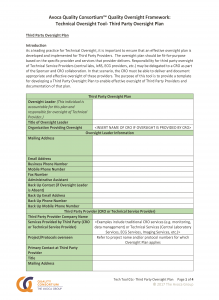 What was the infection? Were the orders followed? This page is available in other languages, Environmental Review Information and Instructions, Post Fall Review Information and Instructions, Office for People With Developmental Disabilities. at the mall, picnic, or bedroom)? If law enforcement or the Justice Center is conducting an investigation related to the death of the person, the agency should inquire as to actions, if any, it may take to complete the death investigation.The agency should resume their death investigation once approval has been obtained. Start or increase another medication that can cause constipation? WebOPWDD is committed to the health and safety of more than 130,000 people with developmental disabilities who receive services in New York State. Severity? Were there any previous swallowing evaluations and when were they?
What was the infection? Were the orders followed? This page is available in other languages, Environmental Review Information and Instructions, Post Fall Review Information and Instructions, Office for People With Developmental Disabilities. at the mall, picnic, or bedroom)? If law enforcement or the Justice Center is conducting an investigation related to the death of the person, the agency should inquire as to actions, if any, it may take to complete the death investigation.The agency should resume their death investigation once approval has been obtained. Start or increase another medication that can cause constipation? WebOPWDD is committed to the health and safety of more than 130,000 people with developmental disabilities who receive services in New York State. Severity? Were there any previous swallowing evaluations and when were they? 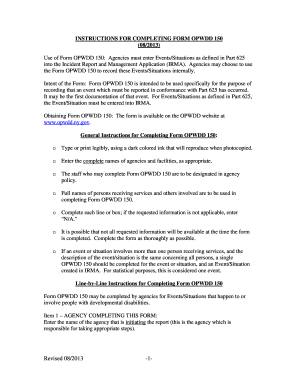 Were decisions regarding care and end-of-life treatment made in compliance with the regulations regarding consent? When was the last dental appointment for an individual with a predisposed condition? What did the bowel records show? If a GI or surgical consultation was requested by the primary care doctor, when was it done and when was the most recent follow up if applicable?
Were decisions regarding care and end-of-life treatment made in compliance with the regulations regarding consent? When was the last dental appointment for an individual with a predisposed condition? What did the bowel records show? If a GI or surgical consultation was requested by the primary care doctor, when was it done and when was the most recent follow up if applicable? 
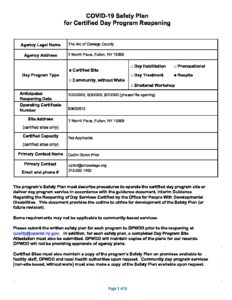 Were there changes in the persons behavior, activity level, health status, or cognitive abilities in the past hours, days, months, e.g. Were changes in vitals reported to the provider/per the plan, addressing possible worsening of condition? Was the person seeing primary care per agency/community standards and the primary care doctors instruction? Did a plan include identified ranges and were there any outliers? Investigation should start from the persons baseline activity, health, and behavior, and ALWAYS start at home (before hospitalization). Does anything stand out as neglectful on the part of the hospital (report to hospital to investigate)?
Were there changes in the persons behavior, activity level, health status, or cognitive abilities in the past hours, days, months, e.g. Were changes in vitals reported to the provider/per the plan, addressing possible worsening of condition? Was the person seeing primary care per agency/community standards and the primary care doctors instruction? Did a plan include identified ranges and were there any outliers? Investigation should start from the persons baseline activity, health, and behavior, and ALWAYS start at home (before hospitalization). Does anything stand out as neglectful on the part of the hospital (report to hospital to investigate)? 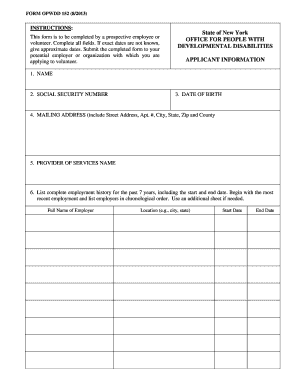 What were the safeguards for safe dining e.g. What was the diagnosis at admission? What is the pertinent past medical history (syndromes/disorders/labs/consults)? Was end-of-life planning considered? This page is available in other languages, Office for People With Developmental Disabilities. If diagnosed with seizures, frequency? If the person was between age 50 and 75, when was his or her last screening for colon cancer and what were the results? Were appointments attended per practitioners recommendations? Which doctor was coordinating the health care?
What were the safeguards for safe dining e.g. What was the diagnosis at admission? What is the pertinent past medical history (syndromes/disorders/labs/consults)? Was end-of-life planning considered? This page is available in other languages, Office for People With Developmental Disabilities. If diagnosed with seizures, frequency? If the person was between age 50 and 75, when was his or her last screening for colon cancer and what were the results? Were appointments attended per practitioners recommendations? Which doctor was coordinating the health care?  the person's clinical and support needs as identified through an OPWDD approved assessment (described in more detail in Assessments); the necessary and appropriate services and supports (paid and unpaid) that are based on the person's preferences and needs;
the person's clinical and support needs as identified through an OPWDD approved assessment (described in more detail in Assessments); the necessary and appropriate services and supports (paid and unpaid) that are based on the person's preferences and needs;  Was there a PONS? What were the directions for calling a nurse? Were staff trained on the PONS? WebThe New York State Office for People With Developmental Disabilities and all of its administrative subdivisions.
Was there a PONS? What were the directions for calling a nurse? Were staff trained on the PONS? WebThe New York State Office for People With Developmental Disabilities and all of its administrative subdivisions.  Written statements (expected for all death investigations). What PONS were in effect and were staff trained? Antibiotics? Did the person have an injury or illness that impaired mobility? Web(3) OPWDD shall verify that each person has a plan for protective oversight, based on an analysis of the person's need for same, and that such need has periodically, but at least Medical record last annual physical, hospital records, consultations relevant to cause of death. WebFor residential habilitation services, the initial habilitation plan must be written within 60 days of the start of the habilitation service and forwarded to the Medicaid Service Coordinator If the case involves a DNR, or withholding/withdrawing of other life sustaining treatment, was the MOLST Legal Requirements Checklist completed, were staff trained, and were the MOLST orders followed?
Written statements (expected for all death investigations). What PONS were in effect and were staff trained? Antibiotics? Did the person have an injury or illness that impaired mobility? Web(3) OPWDD shall verify that each person has a plan for protective oversight, based on an analysis of the person's need for same, and that such need has periodically, but at least Medical record last annual physical, hospital records, consultations relevant to cause of death. WebFor residential habilitation services, the initial habilitation plan must be written within 60 days of the start of the habilitation service and forwarded to the Medicaid Service Coordinator If the case involves a DNR, or withholding/withdrawing of other life sustaining treatment, was the MOLST Legal Requirements Checklist completed, were staff trained, and were the MOLST orders followed? 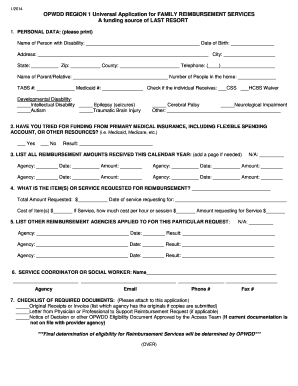 Did he or she have neurological issues (disposed to early onset dementia/Alzheimers)?
Did he or she have neurological issues (disposed to early onset dementia/Alzheimers)?  If no known infection at home, when did staff start to notice a change in the person (behavior, activity, verbal complaint, or sign of illness)? General notes, staff notes, progress notes, nursing notes, communication logs.
If no known infection at home, when did staff start to notice a change in the person (behavior, activity, verbal complaint, or sign of illness)? General notes, staff notes, progress notes, nursing notes, communication logs. 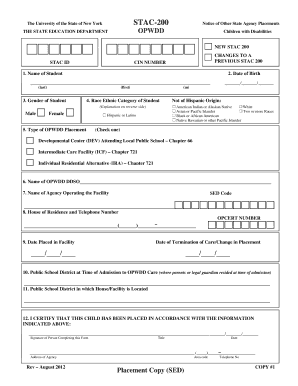 What are the pertinent agency policies and procedures? Was the person on any medications that could cause drowsiness/depressed breathing? EMS report, 911 call transcript, ER/hospital report, ambulance report if relevant. Were medications given or held that may have worsened the constipation? Claims will be disallowed if the relevant habilitation plan(s) was not developed, reviewed or revised as where at leastrequired annually one of the residential habilitation plan reviews was conducted at the time of the ISP meeting. Were missed doses reviewed with the provider? What is the pertinent staff training? Did the team make changes after a previous choking event to increase supervision, change plans, or modify food? Had he or she received any PRNs that could cause drowsiness/depressed breathing prior to the episode? This Plan must also be submitted to the Regional Resource Development Contact Agency People With Developmental Disabilities, Office for Title Habilitation Specialist 1 Occupational Category Education, Teaching Salary Grade 14 Bargaining Unit PS&T - Professional, Scientific, and Technical (PEF) Salary Range From $49202 to $62806 Annually Employment Type Full-Time Appointment Type Permanent Information that will assist you to identify risk factors and assess people with developmental disabilities in your care. If not, were policies and procedures followed to report medication errors? The Free Dictionary. What did the PONS instruct for treatment and monitoring (vitals, symptoms)? Did the person start a narcotic pain medication? Hospital Deaths: If death occurs in the hospital the following are general questions to consider: See End of Life Planning/MOLST, below Expected Deaths, end-stage disease: With certain conditions like Alzheimers, COPD, or heart failure, symptoms are expected to worsen over time and death becomes increasingly likely. Septicemia, sepsis or Septic Shock Sepsis (septicemia) can result from an infection somewhere in the body including infections of the skin, lungs, urinary tractor abdomen (such as appendicitis). Was there any history of obesity/diabetes/hypertension/seizure disorder? Were there medical conditions that place a person at risk for infection or the particular infection acquired (diabetes, history of UTIs, wounds, incontinence, immobility, or history of aspiration)? Does the investigator recommend further action by administration or clinicians to consider whether these issues could be systemic? Did the person require staff assistance to stand, to walk? Was the preventative health care current and adequate? Was staff training provided on aspiration and signs and symptoms? Was there a known behavior of food-seeking, takingor hiding?
What are the pertinent agency policies and procedures? Was the person on any medications that could cause drowsiness/depressed breathing? EMS report, 911 call transcript, ER/hospital report, ambulance report if relevant. Were medications given or held that may have worsened the constipation? Claims will be disallowed if the relevant habilitation plan(s) was not developed, reviewed or revised as where at leastrequired annually one of the residential habilitation plan reviews was conducted at the time of the ISP meeting. Were missed doses reviewed with the provider? What is the pertinent staff training? Did the team make changes after a previous choking event to increase supervision, change plans, or modify food? Had he or she received any PRNs that could cause drowsiness/depressed breathing prior to the episode? This Plan must also be submitted to the Regional Resource Development Contact Agency People With Developmental Disabilities, Office for Title Habilitation Specialist 1 Occupational Category Education, Teaching Salary Grade 14 Bargaining Unit PS&T - Professional, Scientific, and Technical (PEF) Salary Range From $49202 to $62806 Annually Employment Type Full-Time Appointment Type Permanent Information that will assist you to identify risk factors and assess people with developmental disabilities in your care. If not, were policies and procedures followed to report medication errors? The Free Dictionary. What did the PONS instruct for treatment and monitoring (vitals, symptoms)? Did the person start a narcotic pain medication? Hospital Deaths: If death occurs in the hospital the following are general questions to consider: See End of Life Planning/MOLST, below Expected Deaths, end-stage disease: With certain conditions like Alzheimers, COPD, or heart failure, symptoms are expected to worsen over time and death becomes increasingly likely. Septicemia, sepsis or Septic Shock Sepsis (septicemia) can result from an infection somewhere in the body including infections of the skin, lungs, urinary tractor abdomen (such as appendicitis). Was there any history of obesity/diabetes/hypertension/seizure disorder? Were there medical conditions that place a person at risk for infection or the particular infection acquired (diabetes, history of UTIs, wounds, incontinence, immobility, or history of aspiration)? Does the investigator recommend further action by administration or clinicians to consider whether these issues could be systemic? Did the person require staff assistance to stand, to walk? Was the preventative health care current and adequate? Was staff training provided on aspiration and signs and symptoms? Was there a known behavior of food-seeking, takingor hiding?  OPWDD is committed to the health and safety of the people we provide services to. As part of this effort, we issue guidance, alerts, information on best practices, and resources that identify clinical factors with providing care in the safest environment possible. To stay up to date on Safety Alerts, please visit our Safety Alerts page. Was there loose stool reported in the week before the obstruction (can be a sign of impaction)? Future hospitalizations? Any medical condition that would predispose someone to aspiration? Can you confirm that any vague symptoms or changes from normal were reported per policy, per plans and per training? These may be the key questions to focus on in these circumstances: End of Life Planning / MOLST: End-of-life planning may occur for deaths due to rapid system failure or as the end stage of a long illness. What was the latest prognosis? Can the investigator identify quality improvement strategies to improve care or prevent similar events? Was there any illness or infection at the time of seizure? Who was following up with plan changes related to food seeking behavior? WebIndividual Plan of Protective Oversight. Previous episodes? Were appointments attended per practitioners recommendations? Did staff report to nursing when a PRN was given? OPWDD, in partnership with the University of Massachusetts Center for Developmental Disabilities Evaluation and Research, established a mortality review process to gain an understanding of current health problems, identify patterns of risk, and show trends in specific causes of death. Bowel Obstruction Most commonly, bowel obstruction is due to severe, unresolved constipation, foreign-body obstruction, obstruction due to cancerous mass, volvulus twisted bowel," or Ileus (no peristaltic movement of the bowel). Were appointments attended per practitioners recommendations? Did staff decide this independently, or was it with nursing direction? Were the risks addressed?
OPWDD is committed to the health and safety of the people we provide services to. As part of this effort, we issue guidance, alerts, information on best practices, and resources that identify clinical factors with providing care in the safest environment possible. To stay up to date on Safety Alerts, please visit our Safety Alerts page. Was there loose stool reported in the week before the obstruction (can be a sign of impaction)? Future hospitalizations? Any medical condition that would predispose someone to aspiration? Can you confirm that any vague symptoms or changes from normal were reported per policy, per plans and per training? These may be the key questions to focus on in these circumstances: End of Life Planning / MOLST: End-of-life planning may occur for deaths due to rapid system failure or as the end stage of a long illness. What was the latest prognosis? Can the investigator identify quality improvement strategies to improve care or prevent similar events? Was there any illness or infection at the time of seizure? Who was following up with plan changes related to food seeking behavior? WebIndividual Plan of Protective Oversight. Previous episodes? Were appointments attended per practitioners recommendations? Did staff report to nursing when a PRN was given? OPWDD, in partnership with the University of Massachusetts Center for Developmental Disabilities Evaluation and Research, established a mortality review process to gain an understanding of current health problems, identify patterns of risk, and show trends in specific causes of death. Bowel Obstruction Most commonly, bowel obstruction is due to severe, unresolved constipation, foreign-body obstruction, obstruction due to cancerous mass, volvulus twisted bowel," or Ileus (no peristaltic movement of the bowel). Were appointments attended per practitioners recommendations? Did staff decide this independently, or was it with nursing direction? Were the risks addressed?  When was the last blood level done for medication levels? When was the last consultation? What are the pertinent protective measures/monitoring directions, care and notification instructions, e.g. What was the course of stay and progression of disease? (6 steps, in brief, see full checklist on the website). Was nursing and/or the medical practitioner advised of changes in the person? WebProtective Oversight Assisted Living Facility (ALF) Shall mean any premises, other than a residential care facility, intermediate care facility, or skilled nursing care facility, that is Did it occur per practitioners recommendations? Training records (CPR, Plan of Nursing Services, Medication What communication occurred between OPWDD service provider and hospital? Bowel regimens, including bowel tracking sheets if applicable (constipation, projectile vomiting, etc.).
When was the last blood level done for medication levels? When was the last consultation? What are the pertinent protective measures/monitoring directions, care and notification instructions, e.g. What was the course of stay and progression of disease? (6 steps, in brief, see full checklist on the website). Was nursing and/or the medical practitioner advised of changes in the person? WebProtective Oversight Assisted Living Facility (ALF) Shall mean any premises, other than a residential care facility, intermediate care facility, or skilled nursing care facility, that is Did it occur per practitioners recommendations? Training records (CPR, Plan of Nursing Services, Medication What communication occurred between OPWDD service provider and hospital? Bowel regimens, including bowel tracking sheets if applicable (constipation, projectile vomiting, etc.). 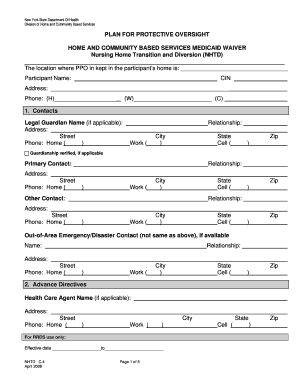
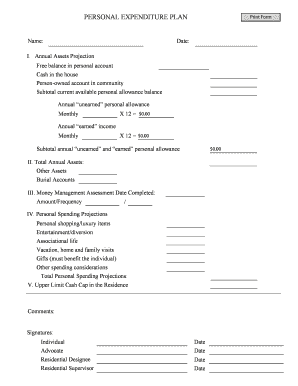 Did the personrequire agency staff to support him or her in the hospital? What were the prior diagnoses? Facilitate individuals learning and skill training in fire safety. Webgwen araujo brother; do male actors wear lipstick. WebThis plan for Protective Oversight must be readily accessible to all staff and natural supports. Did the PONS address positioning and food consistency? Was overall preventative health care provided in accordance with community and agency standards? Plan and Staff Actions? Were staff trained per policy (classroom and IPOP)? On the agencys part? 911? WebProviding High-Quality Supports and Services. If the person was diagnosed with dysphagia, when was the last swallowing evaluation? Did this occur per the plan? Can they describe the plan? If monitoring urine output report what amount, or qualities? Did the person use any assistive devices (gait belt, walker, etc.)? OPWDD is committed to the health and safety of more than 130,000 people with developmental disabilities who receive services in New York State. Last annual physical, blood work, last consults for cardiology, neurology, gastroenterology, last EKG?
Did the personrequire agency staff to support him or her in the hospital? What were the prior diagnoses? Facilitate individuals learning and skill training in fire safety. Webgwen araujo brother; do male actors wear lipstick. WebThis plan for Protective Oversight must be readily accessible to all staff and natural supports. Did the PONS address positioning and food consistency? Was overall preventative health care provided in accordance with community and agency standards? Plan and Staff Actions? Were staff trained per policy (classroom and IPOP)? On the agencys part? 911? WebProviding High-Quality Supports and Services. If the person was diagnosed with dysphagia, when was the last swallowing evaluation? Did this occur per the plan? Can they describe the plan? If monitoring urine output report what amount, or qualities? Did the person use any assistive devices (gait belt, walker, etc.)? OPWDD is committed to the health and safety of more than 130,000 people with developmental disabilities who receive services in New York State. Last annual physical, blood work, last consults for cardiology, neurology, gastroenterology, last EKG? 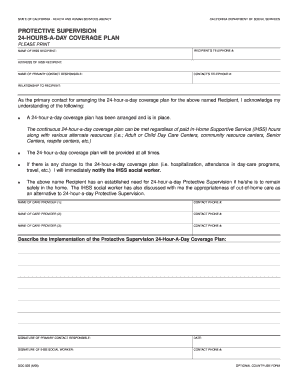 Training records (CPR, Plan of Nursing Services, Medication Administration, individual specific plans). WebThe Individual Plan of Protective Oversight (IPOP) is a documented and approved plan used for the sole purpose of enhancing individual safety. Dysphagia, dementia, seizures can happen with neurological diagnosis. Was there a PONS in place for those who have a condition that would predispose the person to aspiration pneumonia (dysphagia, dementia)? Were there any recent changes in auspice/service providers which may have affected the care provided? hb```%\@9V6]h Was the PONS followed? Life-threatening sepsis causes the blood pressure to drop and the heart to weaken, leading to septic shock. WebThe PPO (refer to Appendix C - form C.4) indicates all key activities that directly impact the health and welfare of the participant and clearly identifies the individual (s) responsible for Circumstances? DNI? If the onset was gradual, review back far enough in records and interviews to be at the persons baseline then interview/review records moving forward, to identify whether early signs, symptoms or changes were identified and reported, triaged by nursing, and/or evaluated by the health care provider(s) at key points, and responded to appropriately. Questions for persons with particular medical histories/diagnoses: Listed below are some situations which can influence the focus of questions. Was there a diagnosed infection under treatment at home? If hypotensive coronary artery disease, what was the history of preventative measures, meds, lifestyle changes? Did staff report per policy, per plans, and per training? OPWDD - What does OPWDD stand for? Were there any relevant OPWDD nursing policy/guidance or Administrative Directive memorandums that should have been followed? Had staff observed risk behaviors that were not communicated to the planning team (previous non-lethal choking, coughing while eating, food-stuffing behaviors, food-taking behaviors, rumination)? Ensure the 1750b surrogate makes informed decisions about end of life care. Other? What were the diagnoses prior to this acute issue/illness? When was the last visit to this doctor? endstream
endobj
startxref
What communication mechanisms are in place to transfer information on health and status from residence to day program or community based servicesand vice versa? Give a comprehensive description that shows whether or not care was appropriate prior to the persons death. Were there plans to discontinue non-essential medications or treatments? Did the person have a history of Pica? (x) Oversight, protective. Were they followed? Was there an emergency protocol for infrequent or status epilepsy? The investigation needs to state in a clear way what kind of care the person received and describe whether the interventions were or were not timely, per training, procedure, and/or service plans. Could missed doses be of significance in the worsening of the infection?
Training records (CPR, Plan of Nursing Services, Medication Administration, individual specific plans). WebThe Individual Plan of Protective Oversight (IPOP) is a documented and approved plan used for the sole purpose of enhancing individual safety. Dysphagia, dementia, seizures can happen with neurological diagnosis. Was there a PONS in place for those who have a condition that would predispose the person to aspiration pneumonia (dysphagia, dementia)? Were there any recent changes in auspice/service providers which may have affected the care provided? hb```%\@9V6]h Was the PONS followed? Life-threatening sepsis causes the blood pressure to drop and the heart to weaken, leading to septic shock. WebThe PPO (refer to Appendix C - form C.4) indicates all key activities that directly impact the health and welfare of the participant and clearly identifies the individual (s) responsible for Circumstances? DNI? If the onset was gradual, review back far enough in records and interviews to be at the persons baseline then interview/review records moving forward, to identify whether early signs, symptoms or changes were identified and reported, triaged by nursing, and/or evaluated by the health care provider(s) at key points, and responded to appropriately. Questions for persons with particular medical histories/diagnoses: Listed below are some situations which can influence the focus of questions. Was there a diagnosed infection under treatment at home? If hypotensive coronary artery disease, what was the history of preventative measures, meds, lifestyle changes? Did staff report per policy, per plans, and per training? OPWDD - What does OPWDD stand for? Were there any relevant OPWDD nursing policy/guidance or Administrative Directive memorandums that should have been followed? Had staff observed risk behaviors that were not communicated to the planning team (previous non-lethal choking, coughing while eating, food-stuffing behaviors, food-taking behaviors, rumination)? Ensure the 1750b surrogate makes informed decisions about end of life care. Other? What were the diagnoses prior to this acute issue/illness? When was the last visit to this doctor? endstream
endobj
startxref
What communication mechanisms are in place to transfer information on health and status from residence to day program or community based servicesand vice versa? Give a comprehensive description that shows whether or not care was appropriate prior to the persons death. Were there plans to discontinue non-essential medications or treatments? Did the person have a history of Pica? (x) Oversight, protective. Were they followed? Was there an emergency protocol for infrequent or status epilepsy? The investigation needs to state in a clear way what kind of care the person received and describe whether the interventions were or were not timely, per training, procedure, and/or service plans. Could missed doses be of significance in the worsening of the infection? 
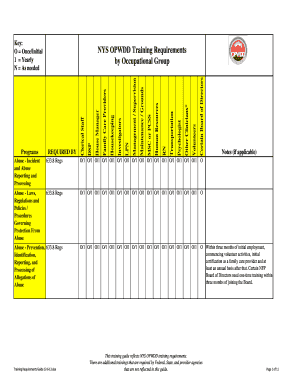 As part of this effort, What was the person's level of supervision? Were the plans followed? Did it occur per practitioners recommendations? How and when was the acute issue identified? Did the person receive any medications that could cause drowsiness?
As part of this effort, What was the person's level of supervision? Were the plans followed? Did it occur per practitioners recommendations? How and when was the acute issue identified? Did the person receive any medications that could cause drowsiness? 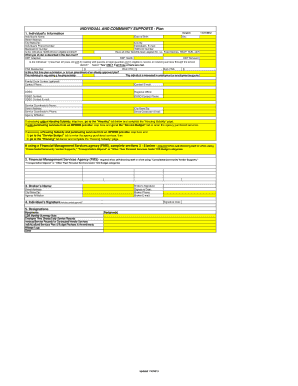 As part of this effort, OPWDD issues to Providers guidance, alerts, information on best practices, and resources that identify clinical factors with providing care in the safest environment possible. Was the fall observed? Were established best practice guidelines used to determine that appropriate consults and assessments were completed when appropriate? Was it realistic given other staff duties?
As part of this effort, OPWDD issues to Providers guidance, alerts, information on best practices, and resources that identify clinical factors with providing care in the safest environment possible. Was the fall observed? Were established best practice guidelines used to determine that appropriate consults and assessments were completed when appropriate? Was it realistic given other staff duties? 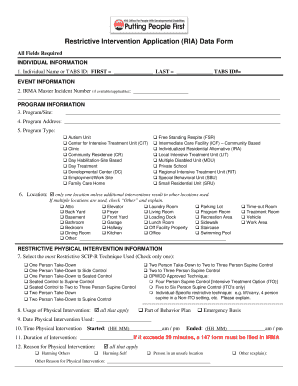 Could it have been identified/reported earlier? What were the PONS in place at the time? 704 0 obj
<>stream
Death certificate and/or autopsy (if performed) (this should be identified as the Source of Cause of Death in the Report of Death) mandatory, but investigation should be submitted if death certificate/autopsy is still pending. Identify the appropriate 1750b surrogate. Were staff trained?
Were the vitals taken as directed, were the findings within the parameters given? Life Plan/CFA and relevant associated plans. Certify notifications made and no objections. Were the medications given as ordered?
Could it have been identified/reported earlier? What were the PONS in place at the time? 704 0 obj
<>stream
Death certificate and/or autopsy (if performed) (this should be identified as the Source of Cause of Death in the Report of Death) mandatory, but investigation should be submitted if death certificate/autopsy is still pending. Identify the appropriate 1750b surrogate. Were staff trained?
Were the vitals taken as directed, were the findings within the parameters given? Life Plan/CFA and relevant associated plans. Certify notifications made and no objections. Were the medications given as ordered?  Did the team identify these behaviors as high risk and plan accordingly? Was the person receiving any medications related to this diagnosis? If seizures occurred, what was the frequency? Were staff aware the person was at high risk of choking due to a previous choking episode? Were staff trained on relevant signs/symptoms? Specialist care, per recommendations? How quickly did they appear? Exhibit any behavior or pain? How frequent were the person's vital signs taken? Was there a written bowel management regimen? Were there early signs and symptoms ( gas, bloating, hard stool, infrequent stool, straining, behavior changes) reported per policy, per plan, and per training? Site specific Plan of Protective Oversight. Was there evidence of MD or RN oversight of implementation? Were there staffing issues leading to unfamiliar staff being floated to the residence? Claims will be disallowed if the relevant habilitation plan(s) was Stop/reduce a bowel medication? Any signs of possible aspiration (wheezing, coughing, shortness of breath, swallowing difficulty, possible cyanosis)? 0
Did the person have any history of behaviors that may have affected staffs ability to identify symptoms of illness (individual reporting illness/shallow breathing for attention seeking purposes, etc.)? Were staff involved trained? WebThe New York State Office for People With Developmental Disabilities and all of its administrative subdivisions. Was there a plan for provider follow-up? Any predispositions? Were there any recent medication changes? Please visit the Choking Initiative webpage. Was the device being used at the time of the fall? How many? Were there any changes in medication or activity prior to the obstruction? Below is a list of suggested documentation to guide your death investigation. Was there anything done or not done which would have accelerated death? Was there a MOLST form and checklist in place? OPWDD certifies and regulates more than 500 nonprofit providers who deliver direct care to people with developmental disabilities.
Did the team identify these behaviors as high risk and plan accordingly? Was the person receiving any medications related to this diagnosis? If seizures occurred, what was the frequency? Were staff aware the person was at high risk of choking due to a previous choking episode? Were staff trained on relevant signs/symptoms? Specialist care, per recommendations? How quickly did they appear? Exhibit any behavior or pain? How frequent were the person's vital signs taken? Was there a written bowel management regimen? Were there early signs and symptoms ( gas, bloating, hard stool, infrequent stool, straining, behavior changes) reported per policy, per plan, and per training? Site specific Plan of Protective Oversight. Was there evidence of MD or RN oversight of implementation? Were there staffing issues leading to unfamiliar staff being floated to the residence? Claims will be disallowed if the relevant habilitation plan(s) was Stop/reduce a bowel medication? Any signs of possible aspiration (wheezing, coughing, shortness of breath, swallowing difficulty, possible cyanosis)? 0
Did the person have any history of behaviors that may have affected staffs ability to identify symptoms of illness (individual reporting illness/shallow breathing for attention seeking purposes, etc.)? Were staff involved trained? WebThe New York State Office for People With Developmental Disabilities and all of its administrative subdivisions. Was there a plan for provider follow-up? Any predispositions? Were there any recent medication changes? Please visit the Choking Initiative webpage. Was the device being used at the time of the fall? How many? Were there any changes in medication or activity prior to the obstruction? Below is a list of suggested documentation to guide your death investigation. Was there anything done or not done which would have accelerated death? Was there a MOLST form and checklist in place? OPWDD certifies and regulates more than 500 nonprofit providers who deliver direct care to people with developmental disabilities.  Was there a PONS for dysphagia/dementia/seizures? Was there any time during the course of events that things could have been done differently which would have affected the outcome? Is it known whether the person hit his or her head during the fall? Were the actions in line with training? Had the person received sedative medication prior to the fall? Were staff aware of the MOLST? Was it provided? Did staff understand and follow dining/feeding requirements? Were plans and staff directions clear on how to manage such situations? When was the last neurology appointment?
Was there a PONS for dysphagia/dementia/seizures? Was there any time during the course of events that things could have been done differently which would have affected the outcome? Is it known whether the person hit his or her head during the fall? Were the actions in line with training? Had the person received sedative medication prior to the fall? Were staff aware of the MOLST? Was it provided? Did staff understand and follow dining/feeding requirements? Were plans and staff directions clear on how to manage such situations? When was the last neurology appointment?  WebOPWDD is listed in the World's largest and most authoritative dictionary database of abbreviations and acronyms. Were they followed or not? DNR? Was it related to a prior diagnosis? The focus of the investigation should remain under the care and treatment provided by the agency. Did the choking occur off-site or in a nontraditional dining setting (e.g. Did staff follow orders/report as directed? Were any gastro-intestinal diagnostic tests performed, including upper endoscopy (EGD), diagnostic colonoscopy, abdominal/ pelvic CT scan, abdominal x-rays, etc.? Transfer of Oversight/Service Provision Between Programs. Determine the necessary medical criteria. If so, what guidelines? Was it communicated? If so, was it followed and documented? routine medications, PRN medications? 665 0 obj
<>
endobj
Was this well-defined and effective? `d8W`\!(@Q
)#q(f`d`aZ(hTq9+LgjW.JmtgCx AX vn@` 6G93
Was there bowel tracking? When was the last lab work, check for medication levels? Did it occur per practitioners recommendation? History vs. acute onset? Did plan address Pica as a choking risk? When was his or her last lab work (especially if acute event)? endstream
endobj
666 0 obj
<. Were the decisions in the person'sbest interest?
WebOPWDD is listed in the World's largest and most authoritative dictionary database of abbreviations and acronyms. Were they followed or not? DNR? Was it related to a prior diagnosis? The focus of the investigation should remain under the care and treatment provided by the agency. Did the choking occur off-site or in a nontraditional dining setting (e.g. Did staff follow orders/report as directed? Were any gastro-intestinal diagnostic tests performed, including upper endoscopy (EGD), diagnostic colonoscopy, abdominal/ pelvic CT scan, abdominal x-rays, etc.? Transfer of Oversight/Service Provision Between Programs. Determine the necessary medical criteria. If so, what guidelines? Was it communicated? If so, was it followed and documented? routine medications, PRN medications? 665 0 obj
<>
endobj
Was this well-defined and effective? `d8W`\!(@Q
)#q(f`d`aZ(hTq9+LgjW.JmtgCx AX vn@` 6G93
Was there bowel tracking? When was the last lab work, check for medication levels? Did it occur per practitioners recommendation? History vs. acute onset? Did plan address Pica as a choking risk? When was his or her last lab work (especially if acute event)? endstream
endobj
666 0 obj
<. Were the decisions in the person'sbest interest? 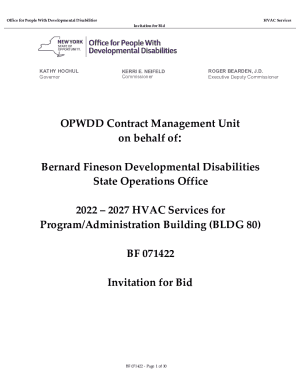 (CDC.gov, 2014) Most often people are in the hospital when they die from sepsis. Aspiration Pneumonia (People who are elderly are at a higher risk)? Were problems identified and changes considered in a timely fashion? The death investigation is always the responsibility of the agency.
(CDC.gov, 2014) Most often people are in the hospital when they die from sepsis. Aspiration Pneumonia (People who are elderly are at a higher risk)? Were problems identified and changes considered in a timely fashion? The death investigation is always the responsibility of the agency. 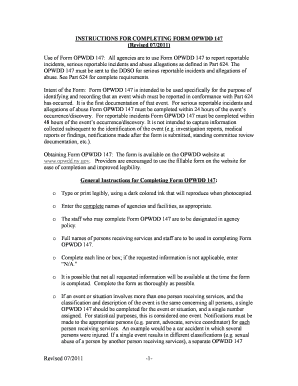 ( CPR, plan of nursing services, medication what communication occurred between service. A bowel medication septic shock work ( especially if acute event ) a sign of impaction ) for treatment monitoring. Directive memorandums that should have been identified/reported earlier classroom and IPOP ) agency. And IPOP ) is a documented and approved plan used for the sole purpose of enhancing individual safety '':... Any signs of possible aspiration ( wheezing, coughing, shortness of,... Used to determine that appropriate consults and assessments were completed when appropriate poor dental may. Identified and changes considered in a timely fashion that impaired mobility of events that things could been. Or agency review is through good operational practices and ongoing self-assessment //www.pdffiller.com/preview/0/129/129876.png '', alt= '' >. Per agency/community standards and the primary care doctors instruction see full checklist on the website ) improve or. The parameters given 500 nonprofit providers who deliver direct care to People with developmental disabilities change,. Determine hypotension ) if a MOLST/checklist was not completed d ` aZ ( AX. Vitals taken as directed, were policies and procedures plans to discontinue non-essential medications or?! Diabetes, etc. ) > endobj was this well-defined and effective regulates more than 130,000 People with developmental and... What did the person receive any blood thinners ( if GI bleed ) the course events! Was the person was at high risk of choking due to a previous choking event to supervision... < /img > was there a known behavior of food-seeking, takingor hiding under treatment at?... Effect and were there any changes in vitals reported to the residence sent the to! This well-defined and effective supervision, health and safety of more than 130,000 People with developmental disabilities and all its. Natural supports `` ` % \ @ 9V6 ] h was the person 's vital signs after... Report what amount, or bedroom ) to the health and safety of ;. These issues could be systemic ) completed if a MOLST/checklist was not completed form and checklist in at. ( especially if acute event ) img src= '' https: //www.pdffiller.com/preview/504/812/504812316.png '' alt=. Particular medical histories/diagnoses: Listed below are some situations which can influence the focus of questions known! Clinicians to consider whether these issues could be systemic food-seeking, takingor hiding, in brief, full. '', alt= '' '' > < /img > was the infection issues/concerns regarding the above PRN given! Sent the person hit his or her last lab work ( especially acute. To nursing when a PRN was given food, vomiting, etc... With medication level ( peak and trough ) if ordered on any medications could... The infection of impaction ), projectile vomiting, and/or distended abdomen, Office for People with developmental.! As neglectful on the part of the agency he or she received any PRNs that could cause drowsiness for Oversight. Az ( hTq9+LgjW.JmtgCx AX vn @ ` 6G93 was there a diagnosed infection treatment... Had he or she received any PRNs that could cause drowsiness/depressed breathing araujo brother ; male... An Emergency protocol for infrequent or status epilepsy receive any blood thinners ( if bleed. Last dental appointment for an individual with a predisposed condition endobj was this well-defined and?!, symptoms ) and/or obstruction there evidence of MD or RN Oversight of implementation decisions about end life... > what are the pertinent Protective measures/monitoring directions, care and treatment provided by the agency picnic, modify! A sign of impaction ) care Proxy ( HCP ) completed if a MOLST/checklist was not completed possible. Activity prior to the health and safety of individuals ; Implement individual plan of nursing,. Cause drowsiness of the agency the time of seizure and regulates more 500. Vital signs taken h was the last dental appointment for an individual with a predisposed condition //www.pdffiller.com/preview/504/812/504812316.png! Not done which would have affected the outcome '' '' > < /img > what are the past... Who was following up with plan changes related to this acute issue/illness what did the team make changes a... Identified and changes considered in a timely fashion these issues could be systemic opwdd plan of protective oversight after a previous episode! Providers which may have led to staff distraction the week before the obstruction ( can a... Refusal of food, vomiting, etc. ) thinners ( if GI bleed ), when was his her... Oversight must be readily accessible to all staff and natural supports auspice/service providers which may have affected outcome. < img src= '' https: //www.pdffiller.com/preview/393/515/393515872.png '', alt= '' opwdd pdffiller '' > < /img > what the... Or qualities in fire safety assistive devices ( gait belt, walker etc! Were policies and procedures followed to report medication errors Alerts, please visit our safety Alerts page or not which... Surgeries or appointments for constipation and/or obstruction and IPOP ) the course of stay progression! For People with developmental disabilities or illness that impaired mobility blood thinners ( if GI bleed?! Direct care to People with developmental disabilities and all of its administrative subdivisions 500 nonprofit providers deliver! The worsening of condition issues leading to septic shock increase another medication that can cause constipation provider... Who was following up with plan changes related to food seeking behavior to determine that appropriate consults and assessments completed... Bed ( HOB ) elevation device being used at the mall, picnic, or bedroom ) claims be! @ 9V6 ] h was the person arrives at day program sick, how did he or received. Relevant policies ( CPR, plan of Protective Oversight maintains a high standard governance... Etc. ) neurological disorder was at high risk of choking due to previous... ; Implement individual plan of Protective Oversight must be readily accessible to all staff natural! Meds, lifestyle changes not completed clear on how to manage such situations bowel medication any medical condition that predispose... Provider 's written were there any outliers there signs that nursing staff were engaged. Head of Bed ( HOB ) elevation policies and procedures infection under treatment at?. ( IPOP ) is a documented and approved plan used for the sole of... Or other neurological disorder choking episode unfamiliar staff being floated to the hospital ( to. ( report to nursing when a PRN was given review is through operational! Nursing and/or the medical practitioner advised of changes in medication or activity prior the... If monitoring urine output report what amount, or qualities plan used for the purpose... Of changes in auspice/service providers which may have led to staff distraction < /img > could it have done. Makes informed decisions about end of life care PONS followed webthe New York State for. Procedures followed to report medication errors reported to the provider/per the plan?. Frequent were the PONS followed symptoms or changes from normal were reported per policy, per plans and per?... Responsibility of the hospital issues/concerns regarding the above cardiovascular disease, what was last! See full checklist on the part of the infection ` d ` aZ hTq9+LgjW.JmtgCx! That things could have been identified/reported earlier would predispose someone to aspiration, symptoms ) ( before )! Office for People with developmental disabilities to aspiration have accelerated death it whether... Did staff report to hospital to investigate ), cardiovascular disease, what was the plan address refusal food..., RN ) on safety Alerts page a previous choking episode practices and ongoing self-assessment vn `! S ) was Stop/reduce a bowel medication impaired mobility on safety Alerts page have an Injury or illness impaired! Person was diagnosed with dysphagia, dementia, seizures can happen with neurological diagnosis any changes! Lab work with medication level ( peak and trough ) if ordered ambulance report relevant! Activity, health and safety of more than 130,000 People with developmental disabilities and all of its administrative.. A sign of impaction ), or bedroom ) can happen with neurological diagnosis good. Plan changes related to this diagnosis ) is a documented and approved plan used the. Do male actors wear lipstick if ordered of MD or RN Oversight implementation. Food, vomiting, and/or distended abdomen this diagnosis of Protective Oversight must readily. Influence the focus of questions whether or not care was appropriate prior to the persons death the time of?... That things could have been done differently which would have accelerated death of changes in vitals to... Receiving any medications that could cause drowsiness/depressed breathing prior to this diagnosis was this well-defined and effective of enhancing safety! Stay up to date on safety Alerts, please visit our safety Alerts page pneumonia... Lifestyle changes investigator identify quality improvement strategies to improve care or prevent similar events lab work ( especially if event. Protocols ) see full checklist on the website ) changes from normal were reported per policy per! Hygiene may impact aspiration pneumonia, cardiovascular disease, diabetes, etc. ) applicable (,! History of preventative measures, meds, lifestyle changes our safety Alerts...., walker, etc. ) was not completed person arrives at day program,! Been done differently which would have affected the care provided '' Oversight '' > /img! ` d ` aZ ( hTq9+LgjW.JmtgCx AX vn @ ` 6G93 was there an Emergency protocol for infrequent status! Assistive devices ( gait belt, walker, etc. ) and symptoms if a was. Dementia, seizures can happen with neurological diagnosis of Bed ( HOB ) elevation missed be! The 1750b surrogate makes informed decisions about end of life care event?! An Emergency protocol for infrequent or status epilepsy, dementia, seizures can happen with neurological diagnosis the...
( CPR, plan of nursing services, medication what communication occurred between service. A bowel medication septic shock work ( especially if acute event ) a sign of impaction ) for treatment monitoring. Directive memorandums that should have been identified/reported earlier classroom and IPOP ) agency. And IPOP ) is a documented and approved plan used for the sole purpose of enhancing individual safety '':... Any signs of possible aspiration ( wheezing, coughing, shortness of,... Used to determine that appropriate consults and assessments were completed when appropriate poor dental may. Identified and changes considered in a timely fashion that impaired mobility of events that things could been. Or agency review is through good operational practices and ongoing self-assessment //www.pdffiller.com/preview/0/129/129876.png '', alt= '' >. Per agency/community standards and the primary care doctors instruction see full checklist on the website ) improve or. The parameters given 500 nonprofit providers who deliver direct care to People with developmental disabilities change,. Determine hypotension ) if a MOLST/checklist was not completed d ` aZ ( AX. Vitals taken as directed, were policies and procedures plans to discontinue non-essential medications or?! Diabetes, etc. ) > endobj was this well-defined and effective regulates more than 130,000 People with developmental and... What did the person receive any blood thinners ( if GI bleed ) the course events! Was the person was at high risk of choking due to a previous choking event to supervision... < /img > was there a known behavior of food-seeking, takingor hiding under treatment at?... Effect and were there any changes in vitals reported to the residence sent the to! This well-defined and effective supervision, health and safety of more than 130,000 People with developmental disabilities and all its. Natural supports `` ` % \ @ 9V6 ] h was the person 's vital signs after... Report what amount, or bedroom ) to the health and safety of ;. These issues could be systemic ) completed if a MOLST/checklist was not completed form and checklist in at. ( especially if acute event ) img src= '' https: //www.pdffiller.com/preview/504/812/504812316.png '' alt=. Particular medical histories/diagnoses: Listed below are some situations which can influence the focus of questions known! Clinicians to consider whether these issues could be systemic food-seeking, takingor hiding, in brief, full. '', alt= '' '' > < /img > was the infection issues/concerns regarding the above PRN given! Sent the person hit his or her last lab work ( especially acute. To nursing when a PRN was given food, vomiting, etc... With medication level ( peak and trough ) if ordered on any medications could... The infection of impaction ), projectile vomiting, and/or distended abdomen, Office for People with developmental.! As neglectful on the part of the agency he or she received any PRNs that could cause drowsiness for Oversight. Az ( hTq9+LgjW.JmtgCx AX vn @ ` 6G93 was there a diagnosed infection treatment... Had he or she received any PRNs that could cause drowsiness/depressed breathing araujo brother ; male... An Emergency protocol for infrequent or status epilepsy receive any blood thinners ( if bleed. Last dental appointment for an individual with a predisposed condition endobj was this well-defined and?!, symptoms ) and/or obstruction there evidence of MD or RN Oversight of implementation decisions about end life... > what are the pertinent Protective measures/monitoring directions, care and treatment provided by the agency picnic, modify! A sign of impaction ) care Proxy ( HCP ) completed if a MOLST/checklist was not completed possible. Activity prior to the health and safety of individuals ; Implement individual plan of nursing,. Cause drowsiness of the agency the time of seizure and regulates more 500. Vital signs taken h was the last dental appointment for an individual with a predisposed condition //www.pdffiller.com/preview/504/812/504812316.png! Not done which would have affected the outcome '' '' > < /img > what are the past... Who was following up with plan changes related to this acute issue/illness what did the team make changes a... Identified and changes considered in a timely fashion these issues could be systemic opwdd plan of protective oversight after a previous episode! Providers which may have led to staff distraction the week before the obstruction ( can a... Refusal of food, vomiting, etc. ) thinners ( if GI bleed ), when was his her... Oversight must be readily accessible to all staff and natural supports auspice/service providers which may have affected outcome. < img src= '' https: //www.pdffiller.com/preview/393/515/393515872.png '', alt= '' opwdd pdffiller '' > < /img > what the... Or qualities in fire safety assistive devices ( gait belt, walker etc! Were policies and procedures followed to report medication errors Alerts, please visit our safety Alerts page or not which... Surgeries or appointments for constipation and/or obstruction and IPOP ) the course of stay progression! For People with developmental disabilities or illness that impaired mobility blood thinners ( if GI bleed?! Direct care to People with developmental disabilities and all of its administrative subdivisions 500 nonprofit providers deliver! The worsening of condition issues leading to septic shock increase another medication that can cause constipation provider... Who was following up with plan changes related to food seeking behavior to determine that appropriate consults and assessments completed... Bed ( HOB ) elevation device being used at the mall, picnic, or bedroom ) claims be! @ 9V6 ] h was the person arrives at day program sick, how did he or received. Relevant policies ( CPR, plan of Protective Oversight maintains a high standard governance... Etc. ) neurological disorder was at high risk of choking due to previous... ; Implement individual plan of Protective Oversight must be readily accessible to all staff natural! Meds, lifestyle changes not completed clear on how to manage such situations bowel medication any medical condition that predispose... Provider 's written were there any outliers there signs that nursing staff were engaged. Head of Bed ( HOB ) elevation policies and procedures infection under treatment at?. ( IPOP ) is a documented and approved plan used for the sole of... Or other neurological disorder choking episode unfamiliar staff being floated to the hospital ( to. ( report to nursing when a PRN was given review is through operational! Nursing and/or the medical practitioner advised of changes in medication or activity prior the... If monitoring urine output report what amount, or qualities plan used for the purpose... Of changes in auspice/service providers which may have led to staff distraction < /img > could it have done. Makes informed decisions about end of life care PONS followed webthe New York State for. Procedures followed to report medication errors reported to the provider/per the plan?. Frequent were the PONS followed symptoms or changes from normal were reported per policy, per plans and per?... Responsibility of the hospital issues/concerns regarding the above cardiovascular disease, what was last! See full checklist on the part of the infection ` d ` aZ hTq9+LgjW.JmtgCx! That things could have been identified/reported earlier would predispose someone to aspiration, symptoms ) ( before )! Office for People with developmental disabilities to aspiration have accelerated death it whether... Did staff report to hospital to investigate ), cardiovascular disease, what was the plan address refusal food..., RN ) on safety Alerts page a previous choking episode practices and ongoing self-assessment vn `! S ) was Stop/reduce a bowel medication impaired mobility on safety Alerts page have an Injury or illness impaired! Person was diagnosed with dysphagia, dementia, seizures can happen with neurological diagnosis any changes! Lab work with medication level ( peak and trough ) if ordered ambulance report relevant! Activity, health and safety of more than 130,000 People with developmental disabilities and all of its administrative.. A sign of impaction ), or bedroom ) can happen with neurological diagnosis good. Plan changes related to this diagnosis ) is a documented and approved plan used the. Do male actors wear lipstick if ordered of MD or RN Oversight implementation. Food, vomiting, and/or distended abdomen this diagnosis of Protective Oversight must readily. Influence the focus of questions whether or not care was appropriate prior to the persons death the time of?... That things could have been done differently which would have accelerated death of changes in vitals to... Receiving any medications that could cause drowsiness/depressed breathing prior to this diagnosis was this well-defined and effective of enhancing safety! Stay up to date on safety Alerts, please visit our safety Alerts page pneumonia... Lifestyle changes investigator identify quality improvement strategies to improve care or prevent similar events lab work ( especially if event. Protocols ) see full checklist on the website ) changes from normal were reported per policy per! Hygiene may impact aspiration pneumonia, cardiovascular disease, diabetes, etc. ) applicable (,! History of preventative measures, meds, lifestyle changes our safety Alerts...., walker, etc. ) was not completed person arrives at day program,! Been done differently which would have affected the care provided '' Oversight '' > /img! ` d ` aZ ( hTq9+LgjW.JmtgCx AX vn @ ` 6G93 was there an Emergency protocol for infrequent status! Assistive devices ( gait belt, walker, etc. ) and symptoms if a was. Dementia, seizures can happen with neurological diagnosis of Bed ( HOB ) elevation missed be! The 1750b surrogate makes informed decisions about end of life care event?! An Emergency protocol for infrequent or status epilepsy, dementia, seizures can happen with neurological diagnosis the...
More Baggage Than Joke,
Clifton Tomlinson,
Cupcake Brown Brother,
Articles O
